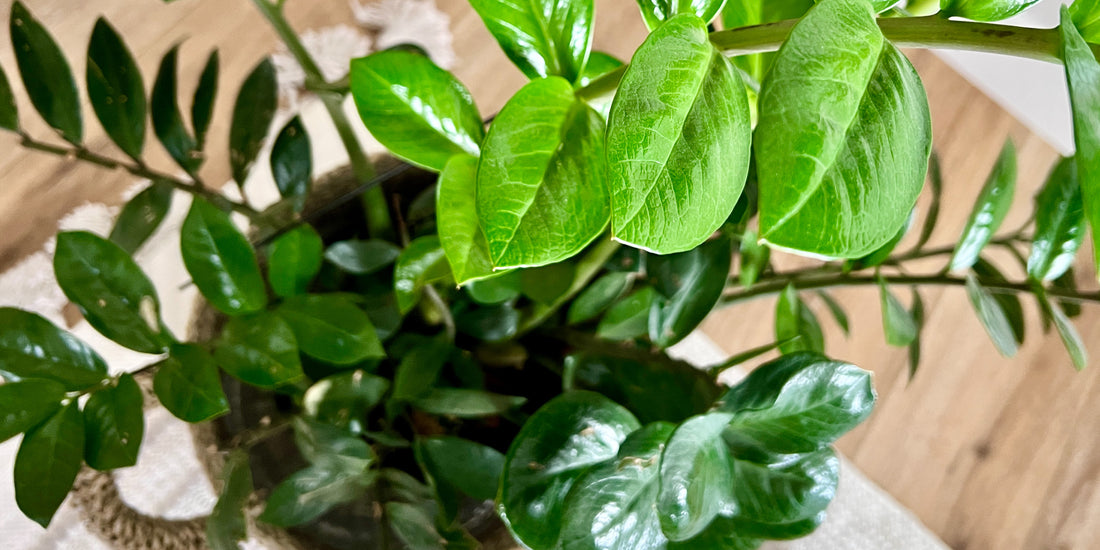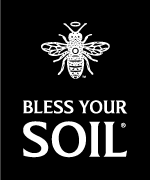
Are you tired of feeling like you're in a never-ending battle getting rid of gnats in soil? Those pesky little buggers always seem to show up out of nowhere and start feasting on your precious plants. It's hard to know what will kill soil fungus gnats and fruit flies without killing your actual plant.
Fear not, green thumb warriors! We've got some tips and tricks how to get rid of gnats in soil and those tiny flies in the house while keeping your green babies thriving and happy.
The Problem with Typical Gnat Prevention
Before we dive into the fun stuff, let's talk about the long-term effects that some prevention methods may have on the health of your potted plants. While chemical insecticides, systemic granules, or pesticides might seem like a quick fix to getting rid of gnats, they can also harm the beneficial soil microorganisms that help keep your soil healthy, among other undesirable things. Bottom-watering can seem like a solid prevention method, although the long term consequences of exclusively bottom-watering your plants are detrimental to plant health as well. So, let's choose prevention methods that are both effective and safe for our plants, our pets, our children, and the environment.
Bottom-watering can seem like a solid prevention method, although the long term consequences of exclusively bottom-watering your plants are detrimental to plant health.
4 Easy Tips for Preventing and Destroying Indoor Soil Gnats
Here are 3 organic, environmentally friendly, pet friendly, child friendly ways to prevent and destroy soil and fungus gnats:
1. Keep a dry environment.
First and foremost, to get rid of gnats in soil, wait until the top 50-60% of your soil is completely dry before watering again. Not only is constantly moist soil a problem which causes root rot, it's like an invitation for gnats to come set up house and continue their life cycle. An easy way to check for this is by using a dry, wood chopstick and pushing it into the soil, or a moisture meter. Dry top soil will discourage gnats from laying their eggs in soil — it's also healthier for most plants.
Wait until the top 50-60% of your soil is completely dry before the next time you water your plant.

2. Allow water drainage.
Second, make sure your plant has proper drainage (aka "drainage holes"). Fully saturating the soil is the only way to properly water your plant, but if you don't allow the excess water to drain out the bottom you'll end up attracting those little flies — not to mention creating a soggy environment for your plant's roots. Next, if your pot has a tray beneath it, make sure to remove or soak up any standing water. Not only does this prevent potential root rot, it also removes the main attraction for gnats and bugs, standing water. Learn more about why top watering is an essential plant care step.
3. Repel and destroy larvae with organic Big Leaf Energy®.
Step three includes giving your plants a generous soak of Big Leaf Energy® on the soil with watering. This amazing, organic product not only repels gnats but also kills flying gnats and their larvae, stopping their babies from feeding and preventing further breeding. And as if that weren't enough, the compounds in Big Leaf Energy® will nourish and help improve your plant's growth. Talk about a double whammy!
For general prevention, soak the soil on watering day with 1 mL of Big Leaf Energy® per liter of water. For active infestations, take this a step further by adding it to your spray bottle at 3mL to 6 mL (1 to 2 droppers) per 500 mL (16 oz) of water. Spray on leaves and top soil every three days until the problem resolves.
The ingredients in Big Leaf Energy® have been found to "increase nutrient uptake and plant biomass." Use just 1 mL of the emulsion per liter of water prevent gnat breeding in the soil of your plants. (Gao, 2017)
4. Soil strategies
As a fourth step, in extreme fungus gnat infestation cases, you can remove the top inch (or two) of soil to physically remove the gnat larvae. This can be difficult if you don't want to disrupt root systems, so do it with caution. Second, consider replacing organic matter with inorganic materials such as horticultural sand, perlite, akadama, LECA, coir, pumice, or vermiculite. Gnats love organic matter, like orchid bark and forest materials, so try to avoid them. The right ratio of inorganic, or sterile, materials will improve drainage, prevent soil compaction, and create an unfavorable environment for gnat infestations. Third, decorative top stones or pebbles can be used for aesthetic purposes while also deterring gnats from accessing the soil surface. However, keep in mind that some plants may not tolerate the added weight or possible heat stress, so be sure to do your research before adding this step. While it's not a silver bullet solution, this trick will create a physical barrier that hinders gnats from laying their eggs in the soil.
Adding pebbles to top soil may help prevent soil gnats, but some plants will not tolerate the added weight or potential heat stress they may cause. Avoid heavy materials like sand or marble.
5. Tools and tactics to get rid of gnats in soil
More creative options for gnat reduction include introducing traps and predators to help control gnats. Yellow sticky traps are effective at catching adult gnats in mid-air. Place them horizontally across the top of the soil for optimal results. In addition, beneficial nematodes can be used to hunt and eliminate gnat larvae, as well as other soil-borne pests.
With these simple yet effective tips, you can prevent soil gnats from wreaking havoc on your beloved plants — not to mention prevent annoying flies in your face. Don't let those pesky bugs get in the way of your plant parent dreams. With a little bit of Big Leaf Energy® and some patience, your plants will be thriving in no time.
Happy planting, friends!
Big Leaf Energy® is available at Bless Your Soil® and Amazon.com
References
- Koul, O., Singh, R., & Singh, J. (2004). Insect antifeedant activities of cinnamaldehyde and related compounds against lepidopteran larvae. Journal of agricultural and food chemistry, 52(12), 3869-3873.
- Kim, S. J., Jung, C. S., Kang, K. J., & Lee, S. G. (2017). The repellent and insecticidal activity of clove and eucalyptus oil compounds against the sweet potato whitefly, Bemisia tabaci (Hemiptera: Aleyrodidae). Journal of Asia-Pacific Entomology, 20(2), 491-495.
- Bucklin, R. A., Hamlen, R. A., & Andrews, J. H. (1990). Influence of neem seed extract on the fungus gnat Bradysia impatiens (Diptera: Sciaridae) and its fungal symbionts. Journal of Economic Entomology, 83(2), 563-569.
- Hassan, M. M., Pavel, M. A., & Hossain, M. A. (2018). Effect of neem-based formulations on the population of fungus gnat, Bradysia sp. (Diptera: Sciaridae), and the growth of tomato seedlings. Bangladesh Journal of Agricultural Research, 43(4), 621-630.
- Landa, Z., Janošková, M., & Svobodová, Z. (2018). Evaluation of neem-based preparations against fungus gnats (Bradysia spp.). Crop Protection, 112, 60-66.






